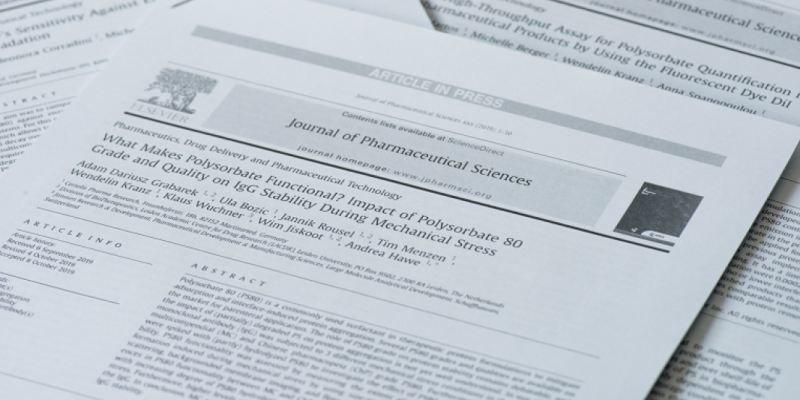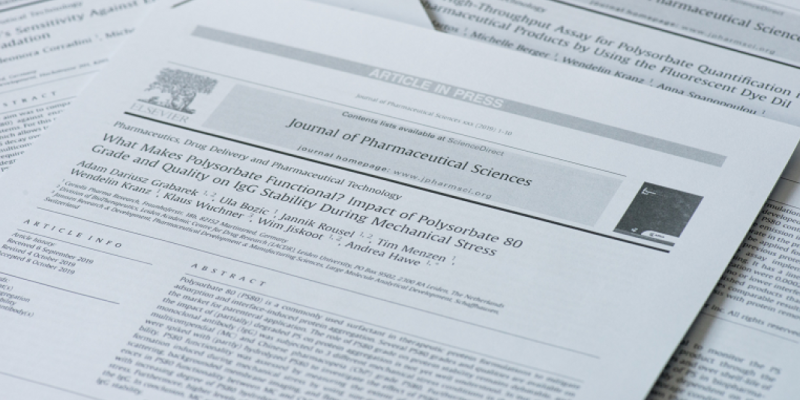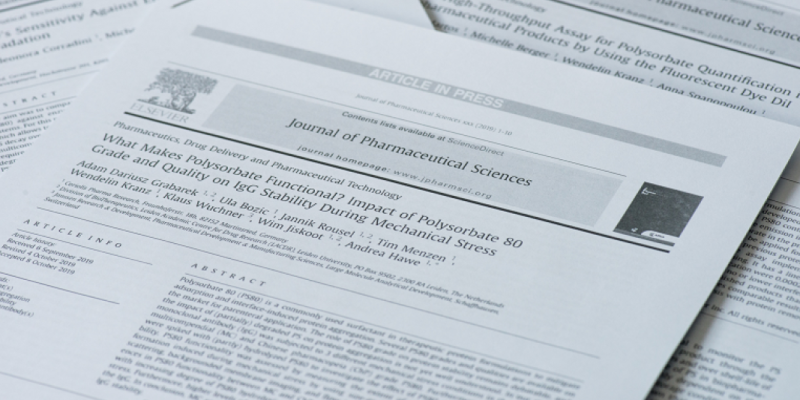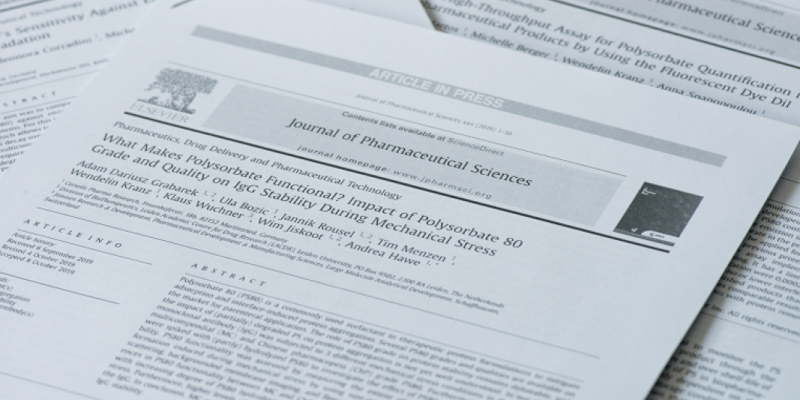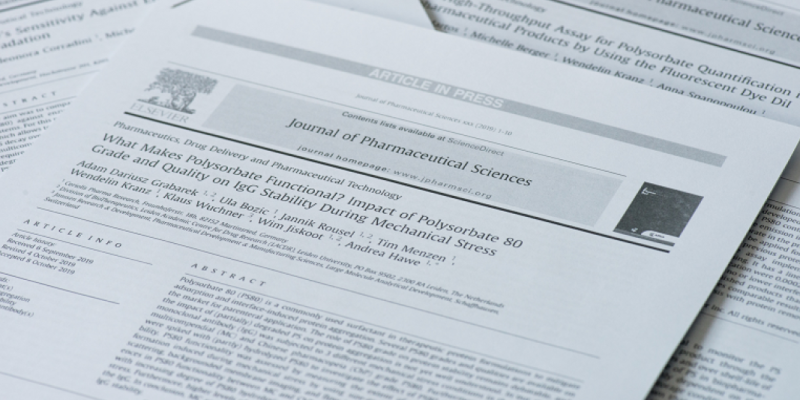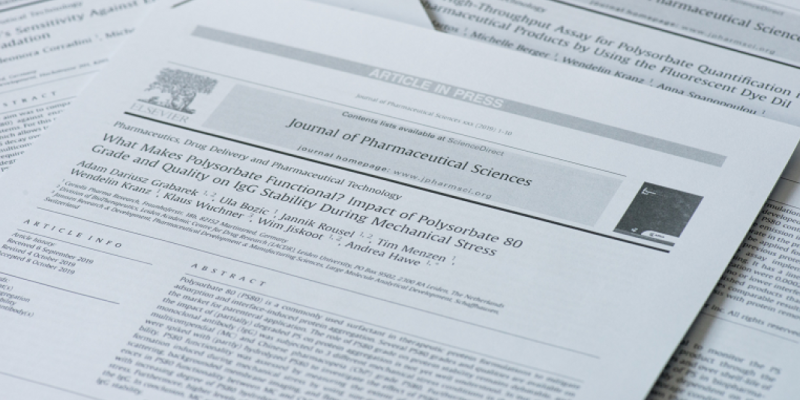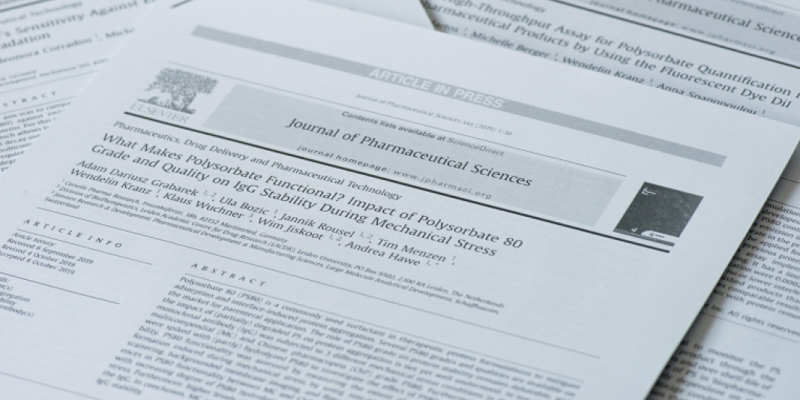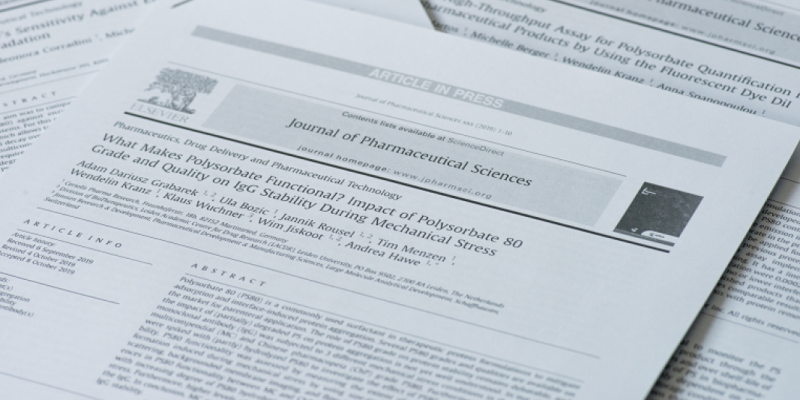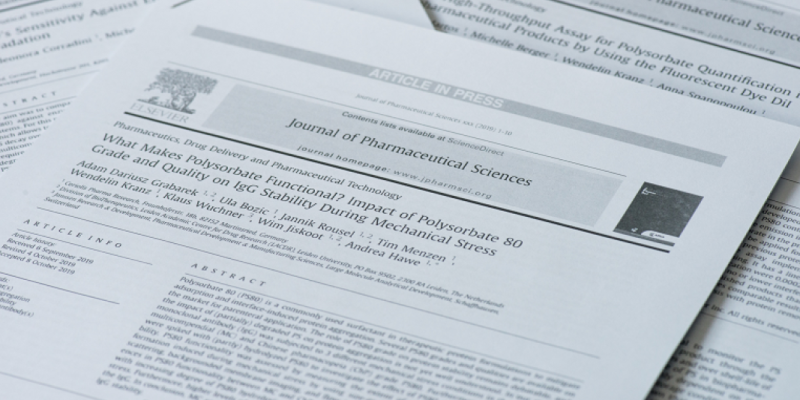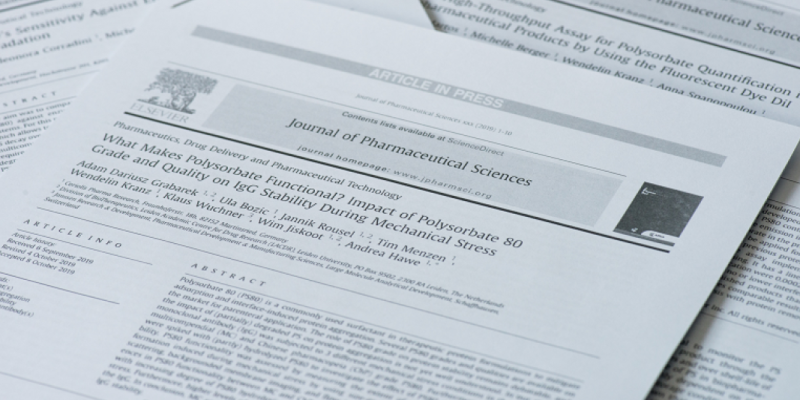New insights into process understanding of solid lipid extrusion (SLE) of extruded lipid implants for sustained protein delivery.
Eur J Pharm Biopharm. 2018 SEP
The aim of this work is a better understanding of solid lipid extrusion (SLE) for protein depot production using a lab-scale twin-screw (tsc)-extruder. In this context, little is known about the relationship of process parameters such as extrusion temperature, screw speed, or formulation on implant characteristics. It is difficult to attribute release characteristics to only one parameter, since the release will always be influenced by a combination of parameters. In this study, we describe the use of an online pressure measurement tool which allows to characterize pressure profiles during an extrusion run. We systematically investigated the impact of various process parameters on implant properties as well as release patterns using a monoclonal antibody (mAb). Solid lipid implants (SLIs) were produced by tsc-extrusion using the low melting triglyceride H12 and the high melting triglyceride Dynasan® D118. A mAb available in a freeze-dried matrix containing hydroxypropyl-β-cyclodextrine (HP-β-CD) was used as incorporated active pharmaceutical ingredient. Extrusion temperature (33-37 °C), screw speed (40-80 rpm) and the lipid composition (30-70% of each triglyceride) were modified. Additionally, freshly extruded SLIs were ground and extruded again as a preparation technique to optimize properties of SLIs. Using the pressure monitoring tool, four characteristic phases were defined for an extrusion run. We found that both, sufficient pressure and adequately molten material, is needed to form a suitable implant. Using the double extrusion technique, release rates could substantially be slowed down without changing formulation.
Eur J Pharm Biopharm. 2018 SEP
https://www.sciencedirect.com/science/article/abs/pii/S0939641117310263?via%3Di…

